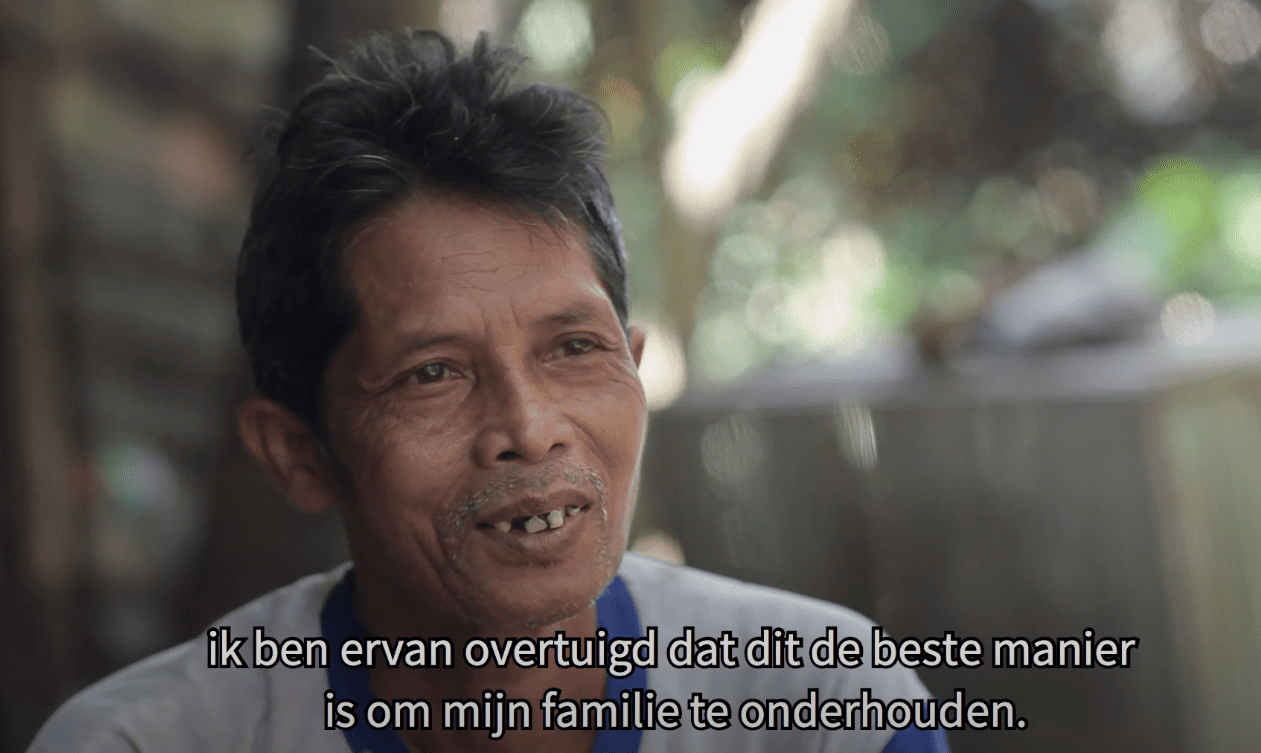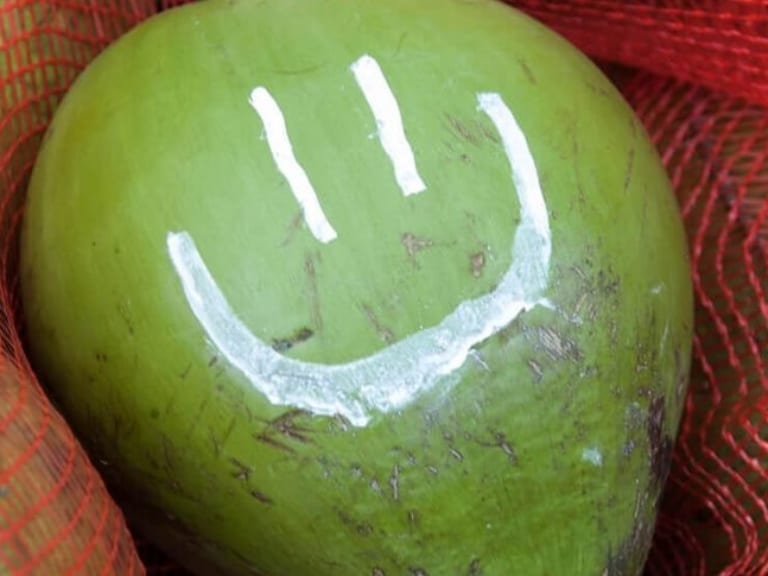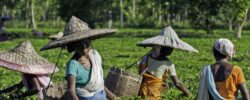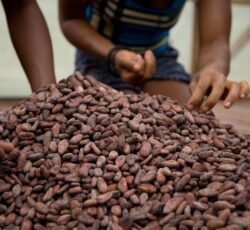 Dangerous work for little return
Dangerous work for little return
With an average land area of 4 hectares and no other sources of income, coconut farmers can make as little as $200 per year.
This video cannot be shown because you didn't accept the cookies.
Change choice

The problem
The average return per hectare of coconut is about $50 per year. With an average land area of 4 hectares and no other sources of income, this provides the farmer with an income of $200 per year: far below the poverty line of $1.90 per day. In the Philippines, where most of the coconut we use in Holland comes from, about 56% of the coconut farmers, and 40% of the employees live in poverty. Farmers who don’t own enough land, often are forced to work as climbers on bigger coconut farms. They climb about 30 trees per day – the trees being up to 30 meters high. If they fall, they are unable to work for some time while losing a substantial amount of income. This can be disastrous for both the farmer and his or her family.
You too, are buying kilos of coconut
1 in 20 products in the supermarket contain coconut. The most obvious are products containing coconut milk, coconut water or coconut fibers, but many more products secretly contain coconut in the form of oil: which is nutritious, has a neutral taste and only turns soft if it is above room temperature. This is ideal for making ice cream that melts less quickly and biscuits that stay crunchy longer. It’s processed in products like sweets, biscuits, ice cream, sauces, coffee creamer, chocolate products, and baby food.
Blockchain can guarantee fair wages
Paying coconut farmers a fair living wage would seem simple, but the journey a coconut undertakes from tree to plate is long and complicated. We believe change is possible. To prove this, we imported 1,000 fair coconuts from 55 Indonesian coconut farmers. These nuts aren’t certified, because there is no need for that: each step from tree to plate is mapped and recorded in detail, with blockchain technology. Put simply: each coconut will have a unique code, with this you can find out precisely who picked the coconut, and what price he or she received for it.
Check our blockchained coconutThe Netherlands can make a serious change
The Netherlands is the second largest coconut oil importer in the world. 89% of the value of all coconut products that we import is coconut oil. We immediately export a large part of this oil. However, a substantial part, 107 million kilos, is processed in the Netherlands. This is subsequently consumed or exported in products. Approximately, 16 million smallholder farmers are behind the coconut we use in the Netherlands. There is relatively little research available about the employees on plantations and smallholder farmers. Fairfood estimates that number to be about 5 million.
By scanning a QR-code on the coconut you could see exactly where it came from and what was paid to whom. This kind of transparency is a first step towards social and environmental sustainability.
More on coconut
Do you have any questions? Maybe we answered it already!
What is a blockchain?
A blockchain is a distributed ledger that allows information to be captured and shared by a community. In this community, each member maintains their own copy of the information and all members must collectively validate each update. This provides a network with a single source of truth to work with. Very similar to a Google sheet, but better. Why? Because with blockchain, data can only be added according to a certain set of rules controlled by the network, and once added, the data can never be altered or deleted.
What is the added value of blockchain?
The ingredients of our food travel thousands of miles until they end up on our plate. The chains are long and complicated and therefore not always equally insightful. Blockchain technology can provide transparency and ensure that captured data can be more customized and remains in the hands of the user. This makes blockchain a fair platform where data can be exchanged, even within competitive value chains. It creates an open food supply chain, from farmer to consumer. Both farmers and consumers will have access to important information.
The farmer will have a view on further processing of his/her product, such as the quality label which is awarded at a later stage. In addition, the nutmeg farmer confirms, for example, that he has received a certain price for a certain quantity and type of quality. The consumer can see exactly where the product comes from, but also whether sustainability and quality promises are being fulfilled. The advantage is that sustainability and quality requirements on the blockchain can be guaranteed.
What is a living income? And what about a living wage?
Simply put: earning a living income means that someone earns enough to lead a decent life. With more diction: a living income is the compensation that a self-employed individual receives for a standard working week that enables that farmer and all his/her family to afford a decent living. This means, among other things, that the household can afford basic necessities like: sufficient food and water, a roof over their heads, education, health care, transport and education. After basic necessities, the farmer should also have enough money to save, and build a pension.
It is important though, to make a distinction between “living wages” and “living income”: a living wage applies to people with wages, whereas a living income applies to self-employed workers, such as the farmers behind our coffee. Learn more on this page.
What is transparency? And what does Fairfood want to achieve with it?
With transparency, we deduce a food supply chain that ceases to be opaque; one in which everyone can see where their food is coming from, by who it was harvested, and whether that someone got a fair price for their produce. Then, we proceed to the following question: do those people earn enough money to make a living income or wage?
We want to use the transparency that blockchain enables to help consumers answer that question and pick their food consciously. Is your food brand claiming to be paying a fair price to their farmers? Why not check for yourself. This is what we want to achieve: a food system in which consumers can verify veracity for themselves so that it can benefit those who cannot.
What is traceability? And what does Fairfood want to achieve with it?
If we go by the book, traceability means that one has the ability to verify the history of something – think of: the provenance of a product. As consumers we (naturally) buy products from opaque supply chains – it is simply how the food system is largely operating at the moment. However, every product has their own individual story; we intend to tell that story. These stories extend far beyond the product that we consume. It goes all the way back to the players at the beginning of our food supply chains: the farmers and food workers.
If we can trace back the history of a product, we could identify some deep-rooted issues that the people at the beginning of the chain are facing. Issues like poverty and unfair pricing are real problems that need to be addressed. In bigger letters, we want to use traceability as a starting point to make sure that the people behind our food can earn a living income.





